The 2024 Ford Mustang is a name that needs no introduction. It has been an icon on the road since the 1960s, and today, it’s recognized globally as one of the best-selling sports cars in history. The Mustang’s distinct roar can be heard long before it comes into view, and with this new S650 generation, Ford has managed to preserve that unmistakable identity while introducing several modern upgrades. Driving this car feels like a rite of passage for automotive enthusiasts. Now, having driven it on the track and pushed it to its limits, it’s time to see what it’s like to live with the Mustang on a daily basis.
The exterior of the new Mustang remains familiar, with Ford ensuring it doesn’t stray too far from the design of its predecessor, the S550. The differences are subtle but effective; the S650 generation sports sharper lines, a more aggressive front fascia, and more pronounced edges that give it an angrier, bolder look. The protruding shoulder lines flex their muscles in a way that makes the car look stronger than ever, while the dimensions haven’t changed much. This is a good thing in my book—after all, roads aren’t getting any wider, and the Mustang’s relatively compact size is part of its charm.
One of the first things that grabs attention is the color. The yellow paint job, which some might call “taxicab yellow” or even liken to the now-extinct Camaro’s paint scheme, is definitely eye-catching. If you’re someone who prefers to blend into the crowd, this car is not for you. The Mustang is a real crowd-pleaser, and this particular shade attracts attention from both adults and kids alike. The car’s lighting system adds to its appeal, with LED lights that are animated and sequential, giving the Mustang a bit of extra flair. The tri-bar LED taillights, a signature design element for the Mustang, are still present and iconic as ever. I’m glad Ford didn’t mess with this feature—it’s one of the things that makes the Mustang, well, the Mustang.
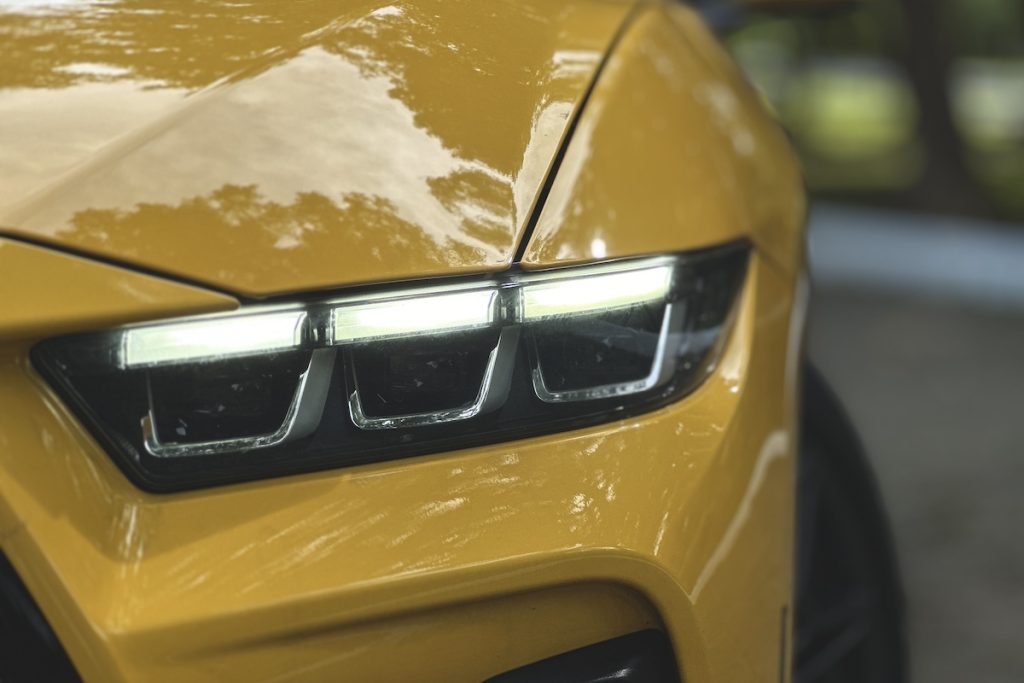
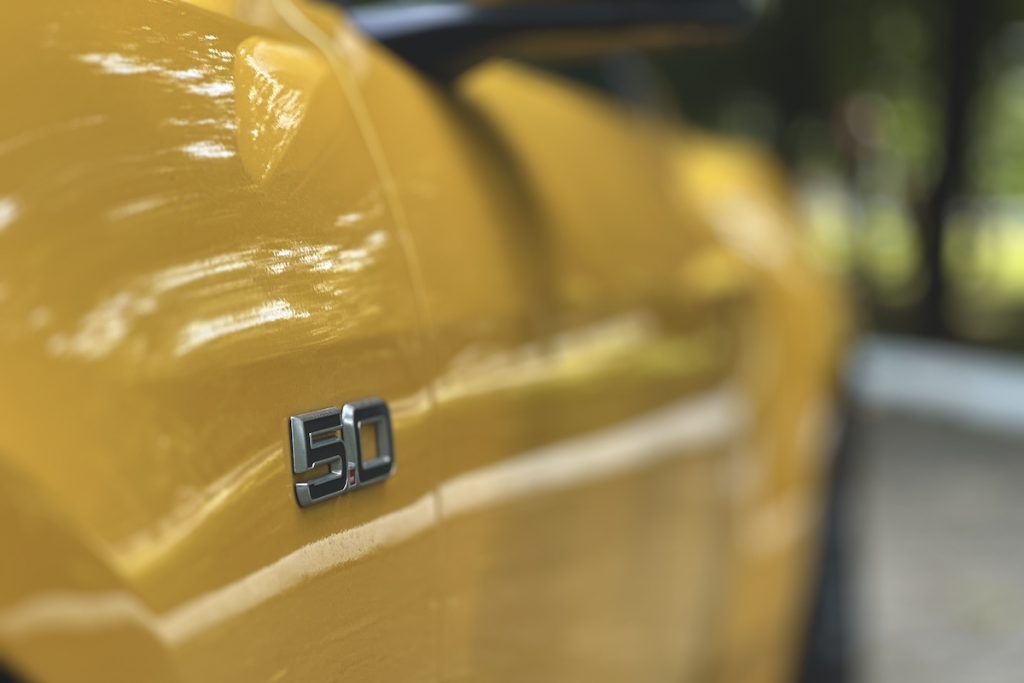
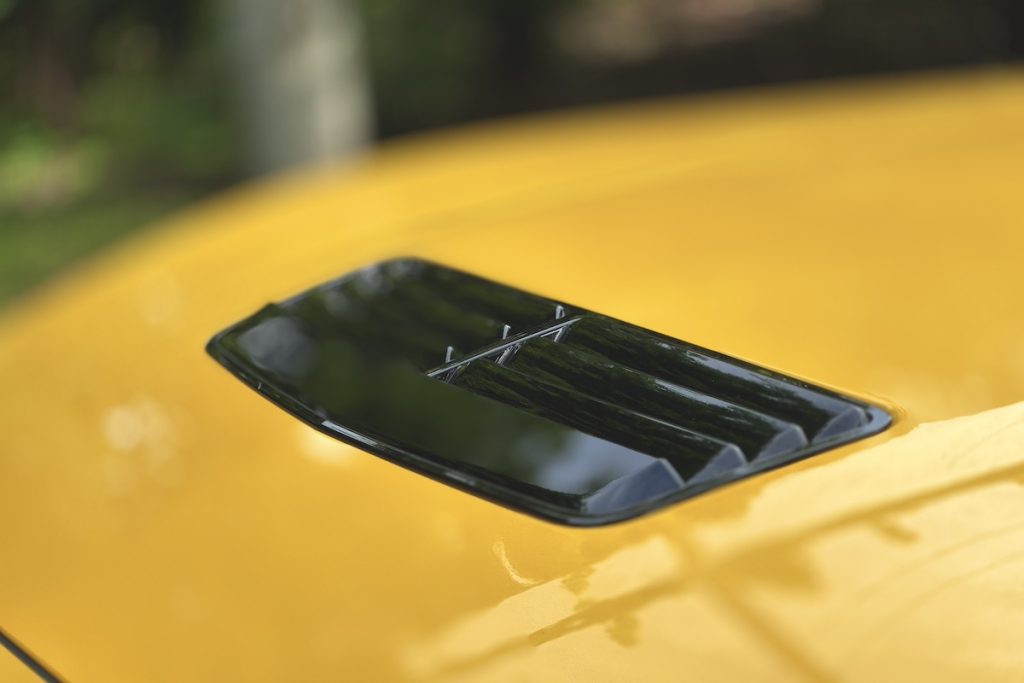
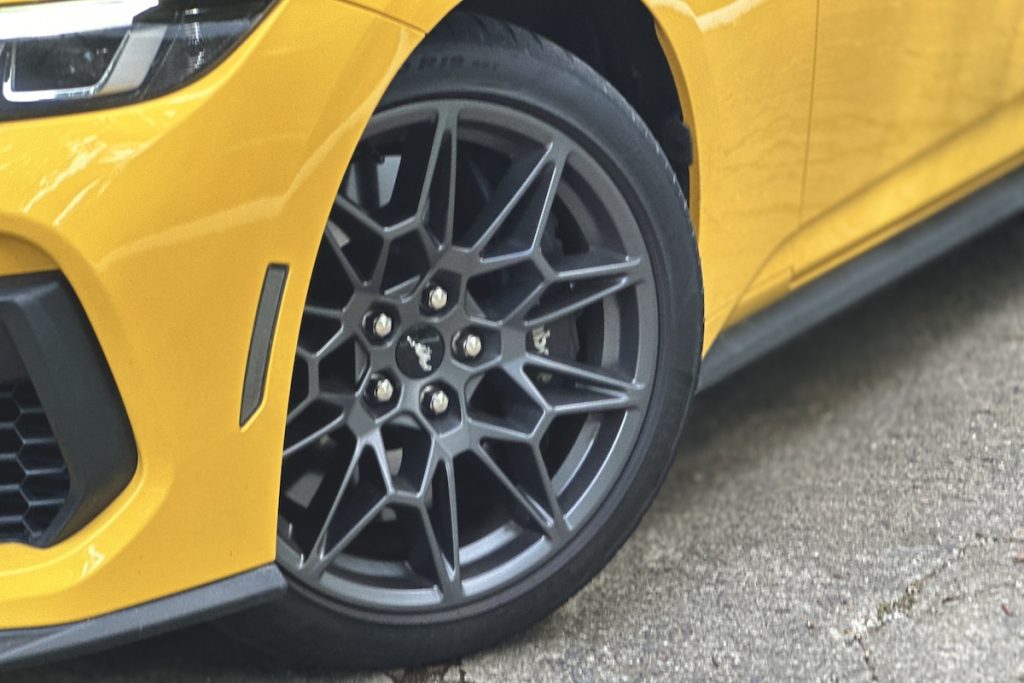
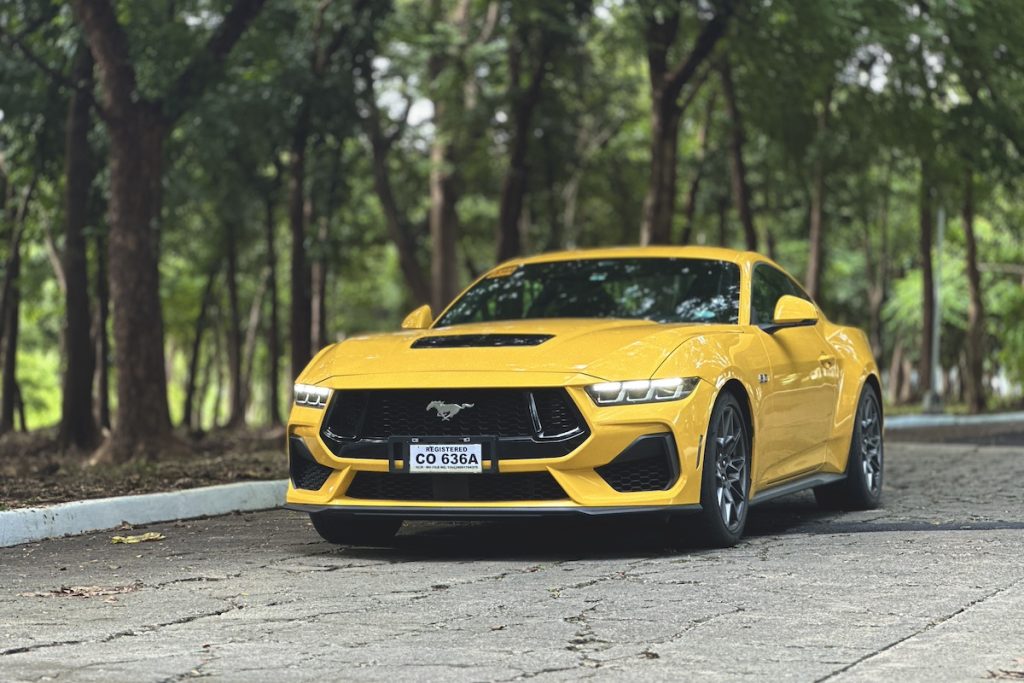
The wheels on the GT Premium model are 19-inch ebony-painted rims, which fill the wheel wells nicely and give the car a muscular stance. I also appreciate the wider rear tires, which help the rear-wheel-drive muscle car maintain traction, especially during spirited driving. Overall, the proportions of the car are spot on, making it look both aggressive and well-balanced.
Moving to the interior, Ford has given the Mustang a modern cabin that feels like a significant departure from the previous generation. Gone are the retro touches and classic design cues that harkened back to Mustangs of old. Instead, the S650 generation embraces a more futuristic design, with squared-off elements and two screens housed under a single pane of glass. This gives the illusion of a single, seamless display, which is a nice touch, though I’m not a huge fan of the thick black bezels around the screens.
The driver’s space is adequate for someone with my build—medium with wide hips—but I can imagine that wider individuals might find the Recaro bucket seats a bit too snug. These seats are great for track driving because they hold you firmly in place, but for daily use, they could be a bit more forgiving. Headroom, however, is abundant, so taller people won’t have any issues with space. The front passenger seat is the same as the driver’s, so once again, it’s not particularly accommodating for larger builds.
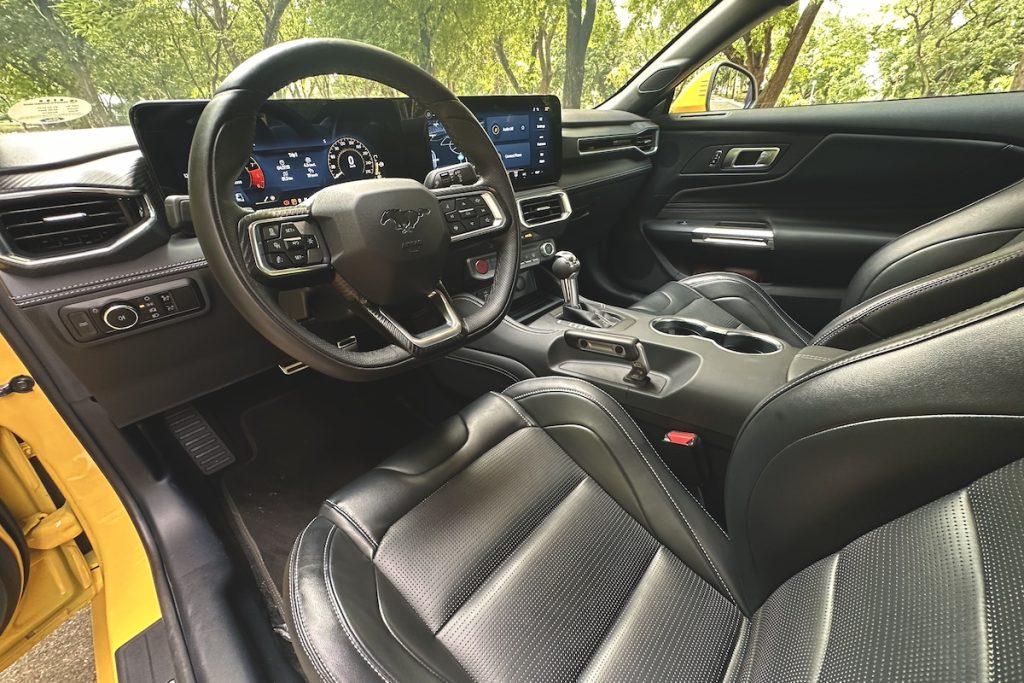
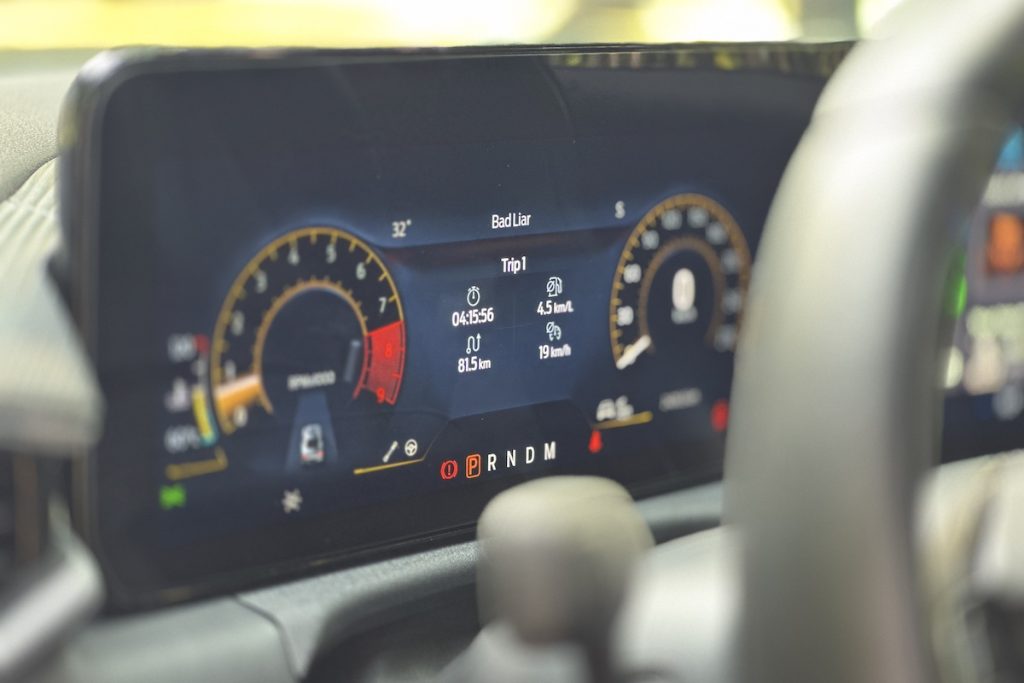
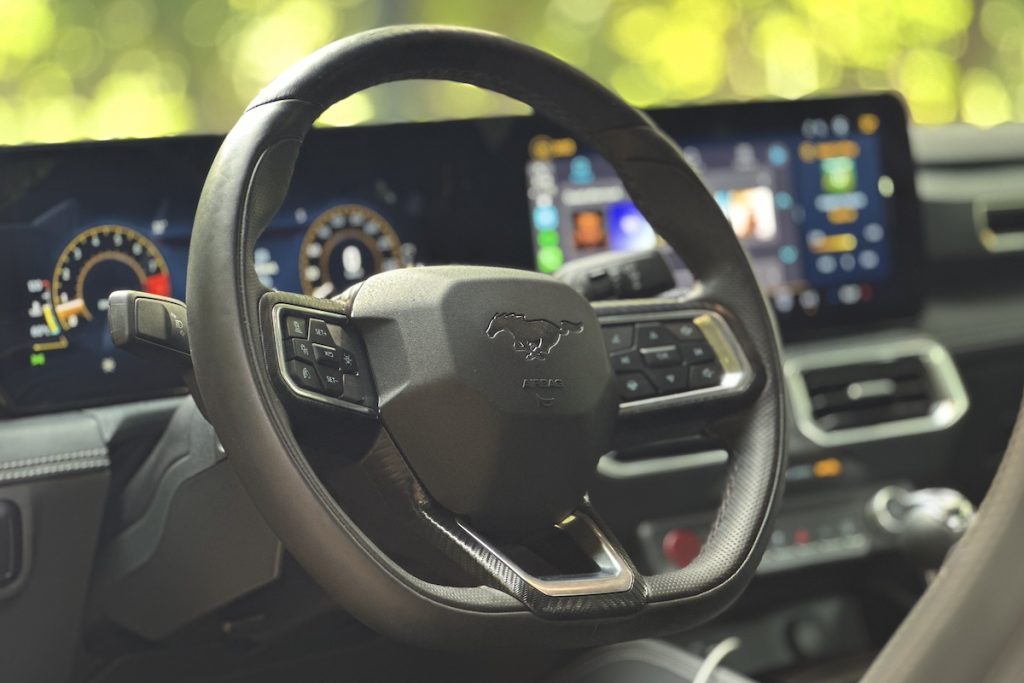
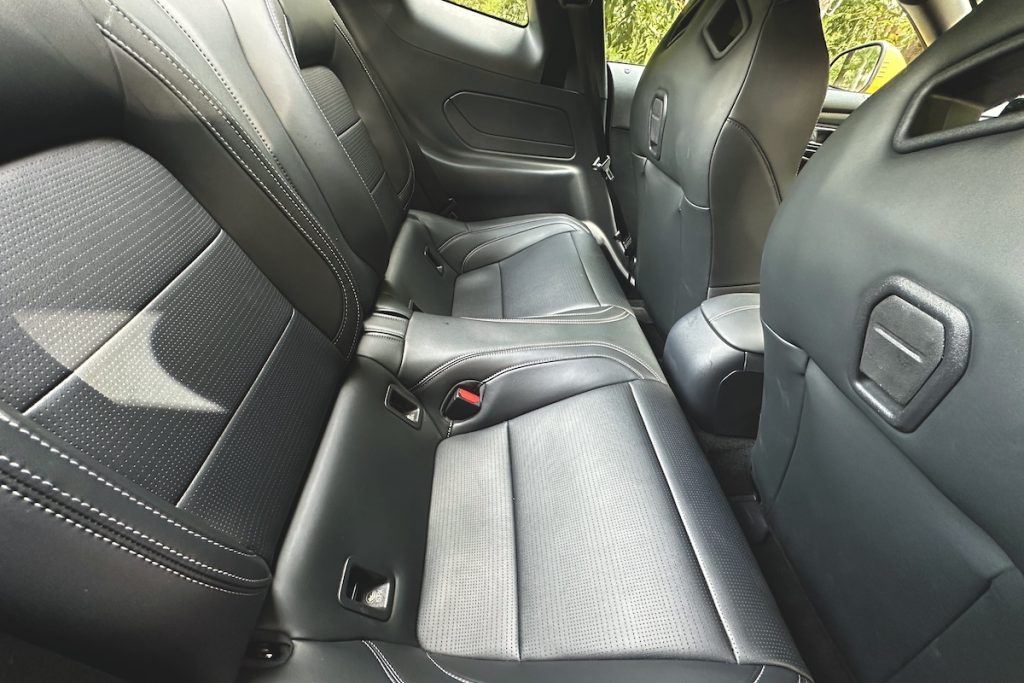
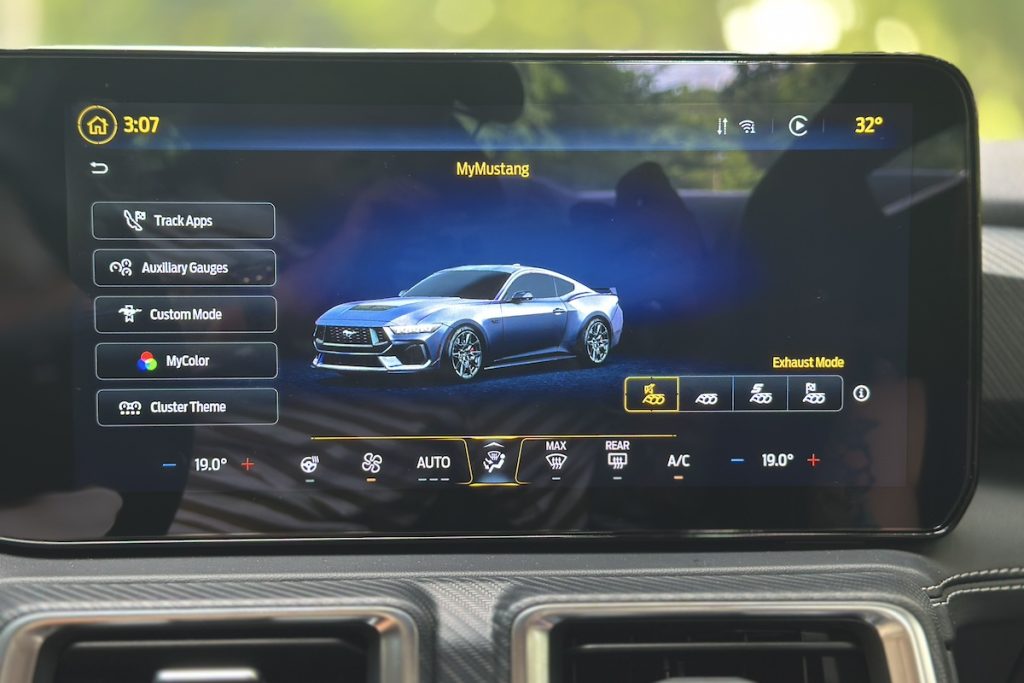
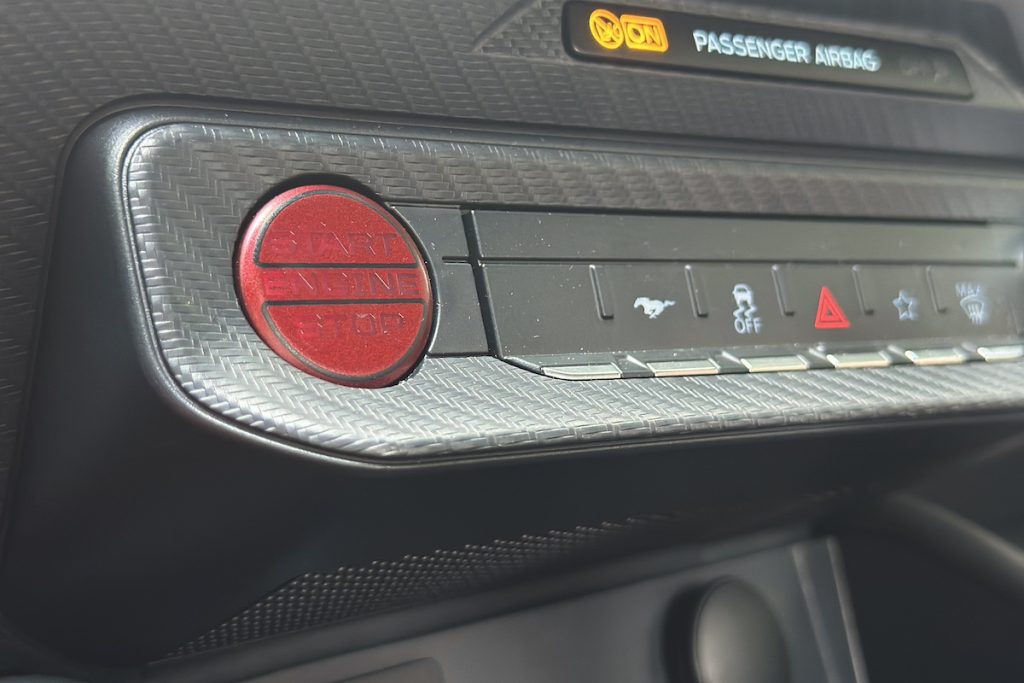
As for the back seats, well, they’re there, but they don’t serve much purpose beyond being a compliance feature. You can fit someone back there in a pinch, but it’s best to think of the Mustang as a two-seater with some extra space for cargo or small children. On the plus side, the trunk is surprisingly spacious for a sports car, and you’ll have no trouble fitting luggage or groceries for a weekend trip.
Tech-wise, the Mustang takes another step forward. The 13-inch center display houses nearly all of the car’s controls, from climate settings to entertainment. While the clean design looks sleek, I do miss having physical buttons and knobs, particularly for the HVAC controls. Still, I can’t deny that the interior looks more modern and clutter-free. The infotainment system is responsive, with minimal lag, and it offers wireless Apple CarPlay, which is a convenient feature. However, there’s no wireless charging, which feels like an oversight in an otherwise tech-laden car. On the audio front, the 12-speaker B&O sound system is superb, offering crisp, clear sound that can easily drown out the noise of the V8—if you ever wanted to do that.
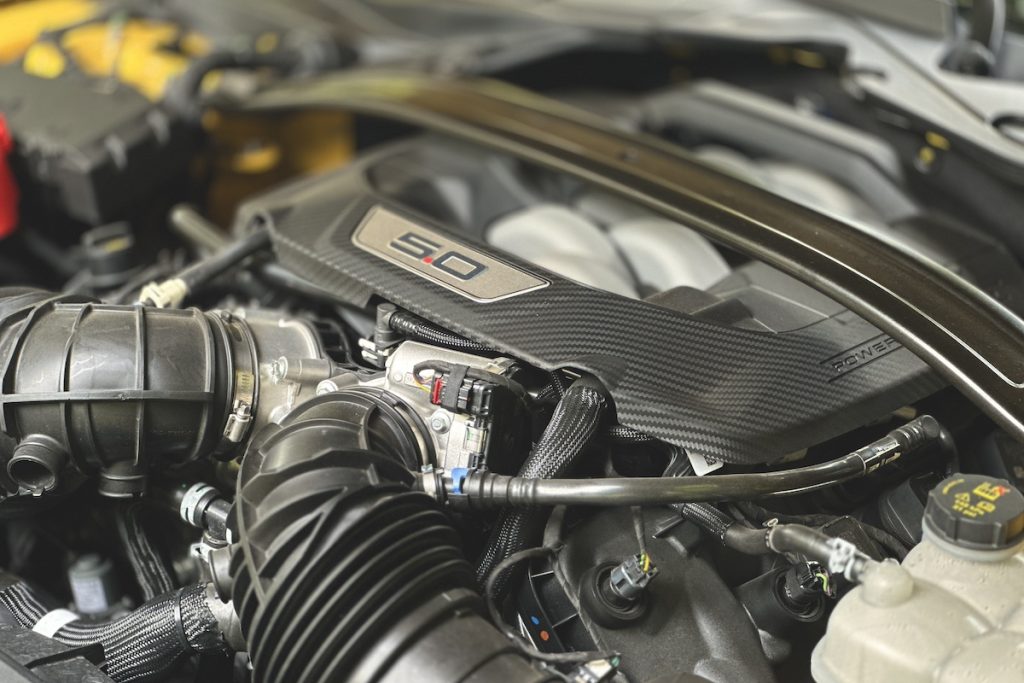
In terms of safety, the Mustang comes with Ford’s Co-Pilot 360 technology, a suite of advanced driver-assist systems that includes features like Auto High Beam Headlights, Blind Spot Information System (BLIS) with Cross Traffic Alert and Braking, Lane Keeping System, and Pre-Collision Assist with Automatic Emergency Braking (AEB). These features are all useful, especially on long drives or in city traffic, though the stop-and-go function of the adaptive cruise control could use some refinement. It’s a bit jerky in acceleration and braking, which isn’t ideal for the stop-start traffic common in Metro Manila.
When it comes to performance, this is where the Mustang truly shines. Under the hood is Ford’s venerable 5.0-liter Coyote V8 engine, producing 493 horsepower and 567 Nm of torque. It’s the most powerful version of the Coyote engine in its base form yet, and boy, does it sound rowdy—just the way I like it. Cold starts are especially loud, much to the chagrin of my neighbors, I’m sure. Thankfully, there’s a quiet mode for the exhaust if you want to keep things civil, but where’s the fun in that?
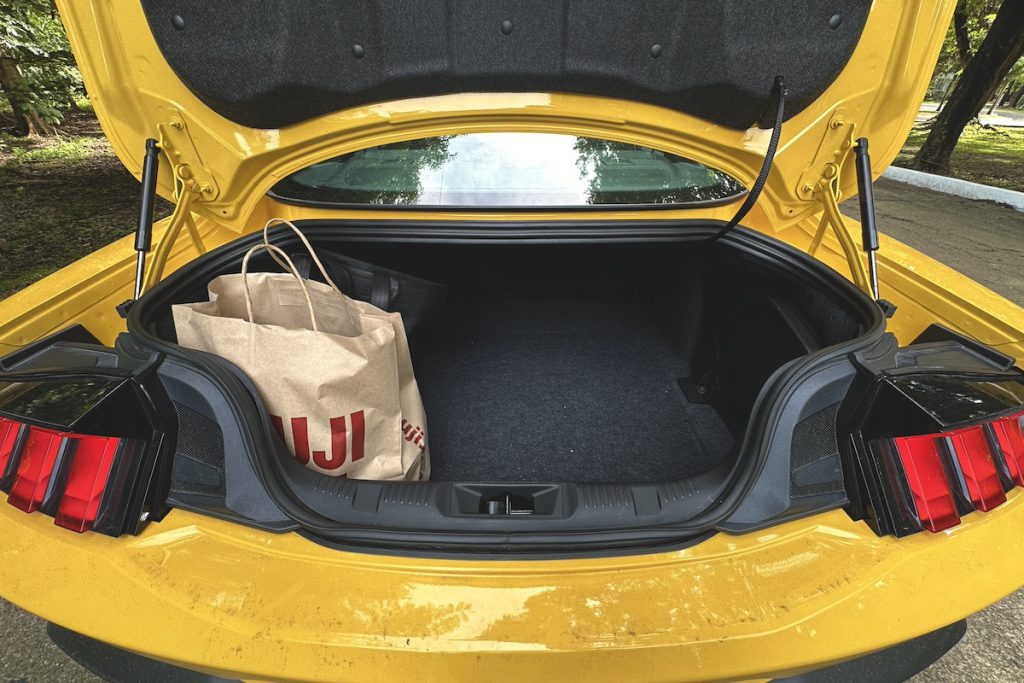
The 10-speed automatic transmission is generally smooth, though I did notice a slight lag when flooring the accelerator. The transmission seems to scramble for the right gear at times, which can be a bit annoying, but when the Mustang pulls, it pulls hard, burying your head into the headrest. Braking is just as impressive, with massive disc brakes and Brembo brake calipers providing excellent stopping power. The Magneride adaptive suspension is another standout feature. It absorbs road imperfections with ease, making the Mustang comfortable for daily driving while maintaining control and composure during aggressive cornering.
Despite its size and power, the Mustang handles surprisingly well in the city. Visibility is good, and the car doesn’t feel as large as it looks. However, the low ground clearance and long wheelbase mean you’ll need to be cautious when navigating speed bumps or steep driveways. On the highway, the Mustang feels nimble and composed, with plenty of grip from the rear wheels, even during spirited driving. Ford has done a great job refining the handling, ensuring that the Mustang’s reputation for being a handful is now a thing of the past.
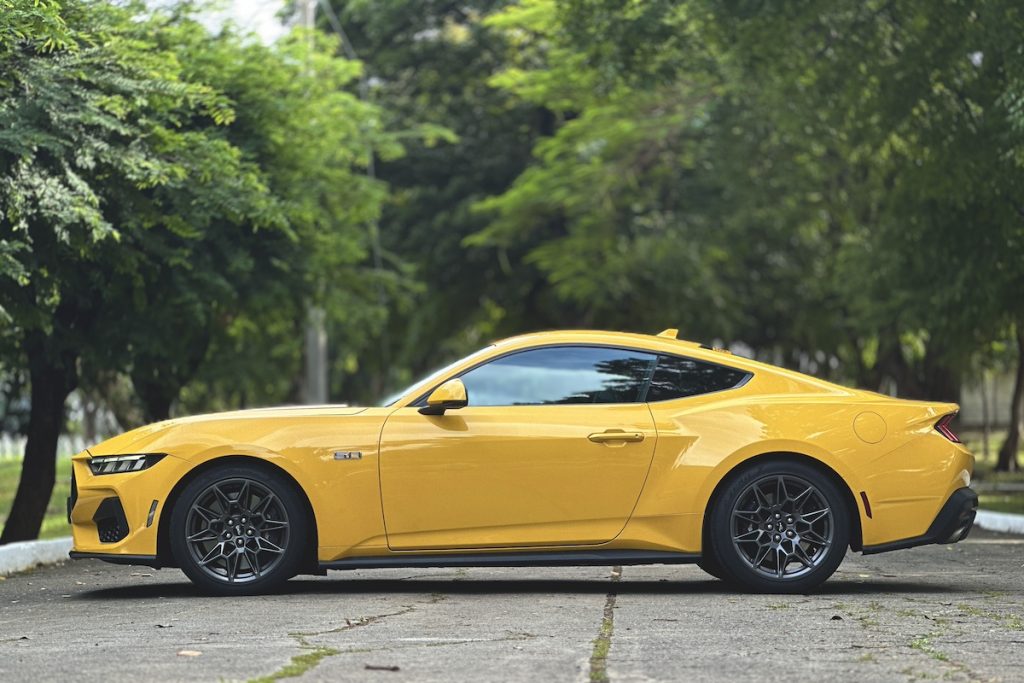
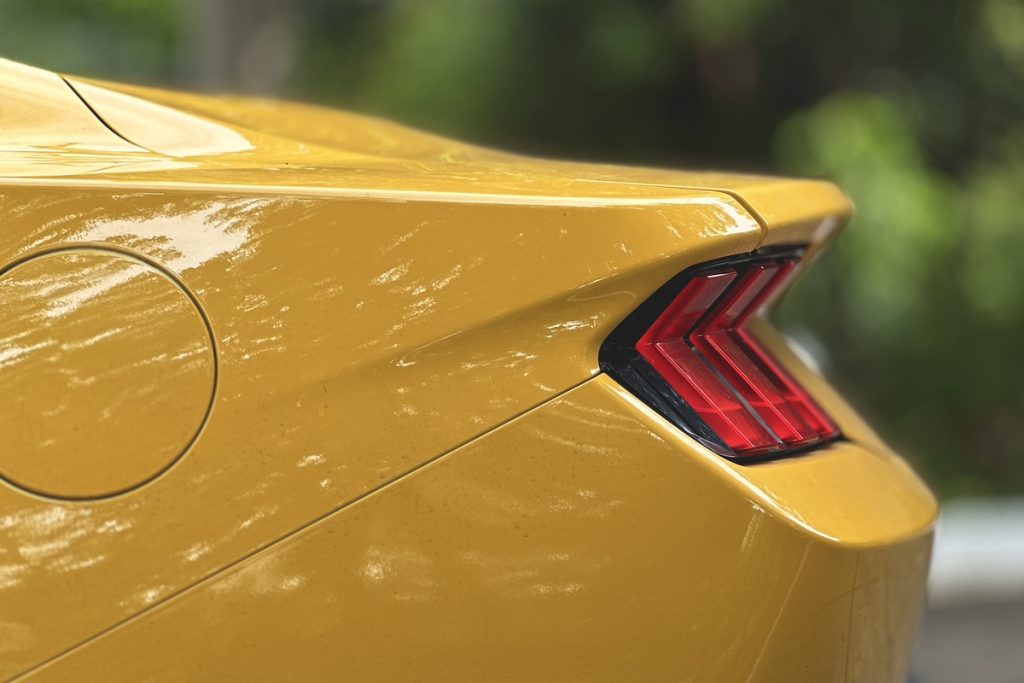
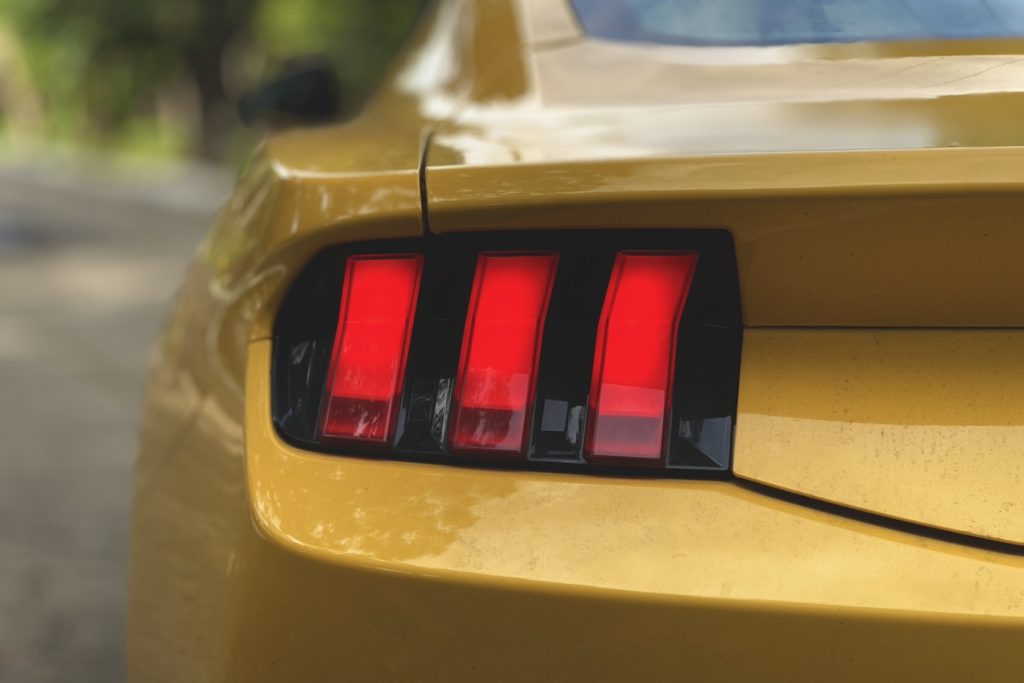
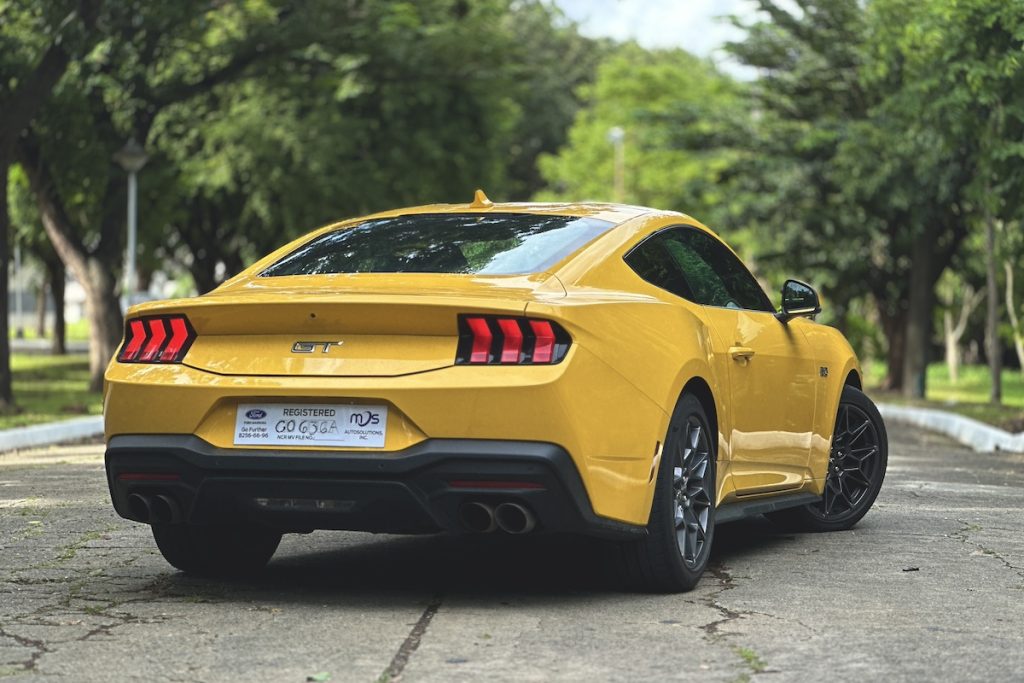
Fuel efficiency, as expected from a naturally aspirated V8, is not the Mustang’s strong suit. After driving nearly 100 kilometers in mixed city and highway conditions, I averaged around 4.5 km/L. It’s not great, but if you’re in the market for a Mustang, fuel economy is probably not your top priority.
At P3,999,000, the Mustang GT Premium is not a cheap car, but it’s also not out of reach for those in the market for a high-performance sports car. With the Dodge Challenger and Chevrolet Camaro exiting the scene, the Mustang doesn’t have many direct competitors, making it a unique offering in today’s market.
Overall, the 2024 Ford Mustang GT Premium is better than ever. It’s not the most practical car, but if you’re buying a Mustang, practicality probably isn’t your main concern. This is a car for those who love to drive, who appreciate the history and heritage of the Mustang, and who want to own a piece of automotive culture. With its blend of modern tech, powerful performance, and unmistakable design, the S650 Mustang is a car that enthusiasts will cherish for years to come.

